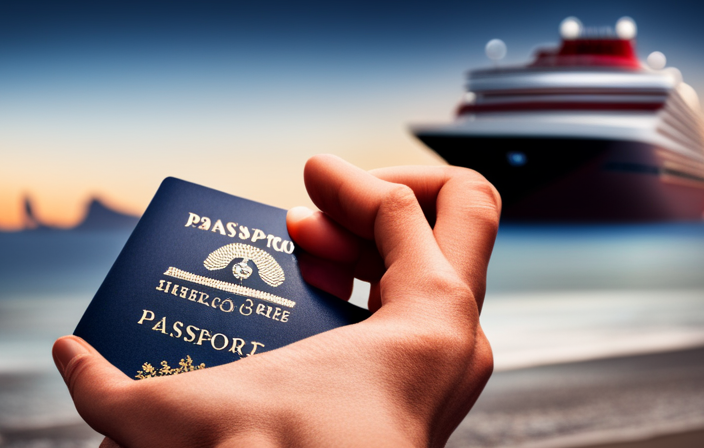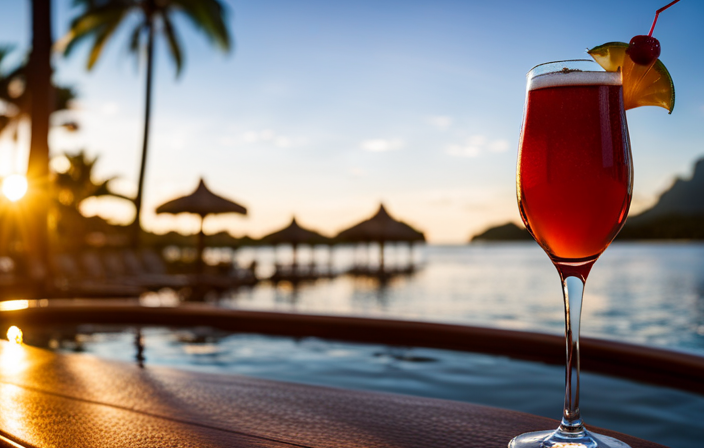Cruise News and Updates
The Growing Asia Cruise Industry: Exploring New Destinations
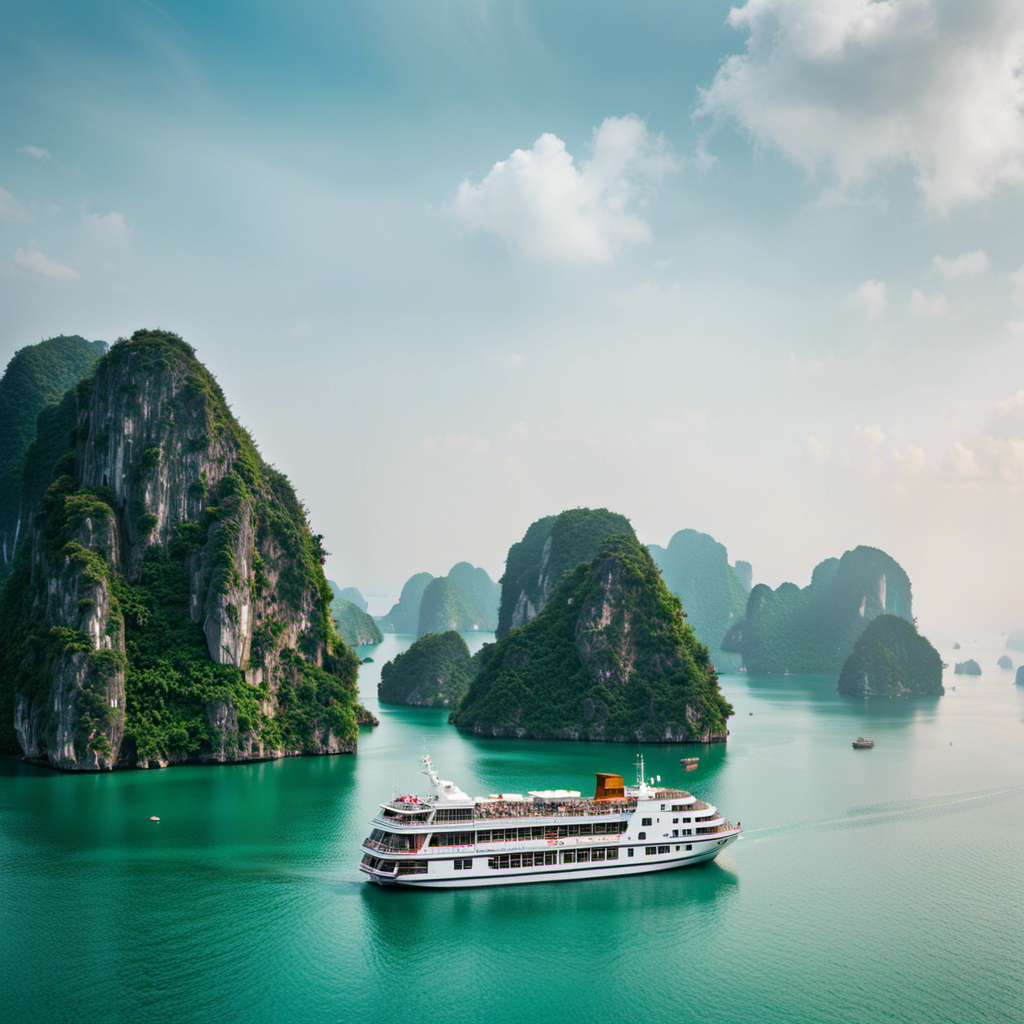
It’s clear that the cruise sector in Asia is undergoing substantial expansion! Demonstrating an impressive expansion of 43% in ocean cruises and voyages throughout 2016, it’s evident that an increasing number of individuals are opting for maritime journeys in this area.
And who can blame them? With 60 ocean cruise ships and a projected passenger capacity of 3.2 million, there’s plenty of room to explore.
In this article, we’ll take a closer look at the growing Asia cruise industry and the exciting new destinations waiting to be discovered.
So grab your swim trunks and sunscreen, because we’re about to embark on an adventure like no other.
Key Takeaways
- The number of ocean cruises and voyages in Asia increased by 43% in 2016 compared to the previous year.
- Asian travelers experienced a 24% increase in ocean cruise passengers from 2014 to 2015.
- Chinese passengers grew at an annual compounded rate of 66% from 2012 to 2015, making China the world’s fastest-growing major source market for cruise passengers.
- Asian cruisers primarily explore Asian destinations, with 84% of cruises being within Asia.
The Rise of Asia Cruise Industry: A Closer Look
Looking at the information, it is clear that the rise of the Asia cruise industry is truly remarkable. Analyzing market growth patterns, it is evident that there are many new opportunities to be uncovered in this thriving industry.
The number of ocean cruises and voyages in Asia has increased by 43% in 2016 compared to the previous year. This growth is further highlighted by the fact that there will be 60 ocean cruise ships sailing in Asia this year, a 15% increase from 2013. The passenger capacity on these ships is also set to reach 3.2 million in 2016, reflecting a substantial 51% increase.
With over 204 destinations across 17 countries, the Asia cruise industry offers a wide range of exciting experiences for travelers. Japan, with its 1,526 port calls in 2016, stands as the biggest destination country.
This rise in the number of Asian cruise passengers is also noteworthy. From 2014 to 2015, there was a 24% increase in ocean cruise passengers from Asia. Chinese passengers, in particular, have experienced rapid growth, with a compounded annual rate of 66% from 2012 to 2015. In 2015, close to half of the Asian volume, or 986,000 passengers, were from mainland China, making China the world’s fastest growing major source market for cruise passengers.
Asian passengers also have a preference for shorter cruise lengths, with 30% choosing two to three night cruises. As for the destinations, Jeju Island in South Korea takes the lead with 460 calls in 2016. Other popular ports include Shanghai, Singapore, and Fukuoka.
Interestingly, Asian cruisers primarily explore Asian destinations, with 84% of them cruising within Asia. Only a small percentage, 3.6%, of Chinese travelers cruise outside of Asia. However, it is worth noting that some Asian passengers do fly to cruise destinations outside the region, particularly in Europe.
Demographically, the average age of cruisers in China is below 43, with 42% of them below 40 years old. In the region, 38% of all cruisers fall below the age of 40. To cater to Asian guests, cruise lines have tailored onboard offerings, such as multigenerational activities and regional cuisine. Asian cruisers also have a preference for high-end shopping and familiar favorites in menus. As a result, cruise lines have introduced high-tech features to attract Asian travelers.
The growth in cruise operations in Asia is also evident. The number of days cruise ships are in operation has increased from 4,307 in 2013 to 7,918 in 2016. Additionally, 12 cruise ships have extended their deployment in Asia this year. The capacity to carry passengers has surged by 51% in 2016.
While Asian outbound tourism is booming, Asian cruisers still primarily explore destinations within Asia. However, there has been a slight increase in the average length of their cruises, from 5.2 nights in 2014 to 5.3 nights in 2015.
Overall, the rise of the Asia cruise industry presents numerous opportunities for growth and the exploration of new destinations.
Unveiling the New Destinations in Asia Cruise Industry
I’ve just discovered some exciting additions to the cruise itineraries in Asia. The cruise industry in Asia is rapidly expanding, and with it, new ports and destinations are emerging. Here are the newest ports that are attracting cruisers in this booming market:
-
Nha Trang, Vietnam: This pristine coastal city is known for its beautiful beaches and vibrant culture. It offers a blend of natural beauty, historical sites, and delicious cuisine, making it a must-visit destination for cruise passengers.
-
Kota Kinabalu, Malaysia: Located on the island of Borneo, Kota Kinabalu is a gateway to exploring the incredible wildlife and natural wonders of the region. From the iconic Mount Kinabalu to the stunning coral reefs of the Tunku Abdul Rahman Marine Park, this port offers a diverse range of experiences.
-
Surabaya, Indonesia: As one of the largest cities in Indonesia, Surabaya is a bustling metropolis with a rich history and vibrant culture. From exploring its colonial-era architecture to visiting its traditional markets, this port provides a unique glimpse into Indonesian life.
These newest ports in Asia are attracting both cruisers and cruise lines, as they tap into the emerging markets and offer exciting experiences to passengers.
Exploring the Booming Cruise Market in Asia
The popularity of cruise travel in Asia continues to soar, attracting a surge of passengers and prompting the expansion of cruise operations in the region.
As the demand for cruising in Asia grows, cruise lines are responding by introducing their newest cruise ships to cater to the emerging Asian markets. These ships are equipped with state-of-the-art amenities and innovative features to provide an exceptional cruising experience.
With the emerging Asian markets, such as China and Japan, experiencing a significant increase in the number of cruise passengers, cruise lines are investing in expanding their operations in the region. This includes increasing the number of port calls and offering more itineraries to cater to the diverse preferences of Asian cruisers.
The booming cruise market in Asia is not only benefiting the cruise lines, but also contributing to the growth of the local economies in the region.
Asian Cruise Passengers: A Growing Trend
Passenger capacity on ocean cruise ships in Asia will reach 3.2 million in 2016, representing a 51% increase compared to previous years. This growth in capacity is a clear indication of the rising trend of Asian cruise passengers.
Asian travelers have shown a preference for shorter cruise lengths, with 30% opting for two to three night cruises. Chinese passengers, in particular, have experienced significant growth, with a compounded annual rate of 66% from 2012 to 2015. This presents great opportunities for the cruise industry to expand in Asia.
Cruise lines have tailored their offerings to cater to Asian guests, including multigenerational activities and regional cuisine. Additionally, high-tech features have been introduced to attract Asian travelers.
With the increase in capacity and the growing preferences of Asian cruise passengers, the cruise industry in Asia is poised for further expansion.
Must-Visit Asian Cruise Destinations
Shanghai, Singapore, and Fukuoka are popular Asian cruise ports with high numbers of calls. These destinations attract a large number of cruise ships due to their vibrant cultures, historical sites, and modern attractions.
However, there are also emerging cruise destinations in Asia that are gaining popularity among travelers. One such destination is Jeju Island in South Korea, which has seen a significant increase in port calls in recent years. Known for its stunning natural landscapes and UNESCO World Heritage sites, Jeju Island offers a unique and picturesque experience for cruise passengers.
Other emerging cruise destinations in Asia include Manila in the Philippines, Da Nang in Vietnam, and Kota Kinabalu in Malaysia. These destinations offer a mix of cultural, historical, and natural attractions, making them an exciting choice for cruise travelers looking to explore new and diverse destinations in Asia.
Demographics of Asian Cruisers: What You Need to Know
I find it fascinating to learn about the demographics of Asian cruisers and how cruise lines have tailored their offerings to cater to Asian guests.
One interesting aspect is the emphasis on multigenerational activities. Asian cruisers often travel with their families, and cruise lines have recognized this by providing a wide range of activities that can be enjoyed by all ages. From onboard water parks and sports facilities to interactive game shows and family-friendly entertainment, there is something for everyone to enjoy.
Another important aspect is the focus on regional cuisine. Asian passengers have a preference for familiar flavors and dishes from their home countries. Cruise lines have responded by incorporating regional cuisine into their menus, giving guests a taste of home while they sail the high seas.
It’s clear that cruise lines are making efforts to ensure that Asian guests feel at home and have a memorable cruising experience.
The Evolution of Cruise Operations in Asia
With the increasing popularity of cruising in Asia, cruise lines have expanded their operations and increased the number of days cruise ships are in operation. This evolution of cruise operations in Asia is a response to the growing demand from emerging markets in the region.
As the number of Asian passengers continues to rise, cruise lines are adapting their offerings to cater to the preferences of this market. They have introduced high-tech features, tailored onboard offerings, and regional cuisine to attract Asian travelers. Additionally, the capacity to carry passengers has surged by 51% in 2016, highlighting the industry’s commitment to meet the increasing demand.
These evolutionary changes in cruise operations in Asia are driven by the explosive growth of Asian outbound tourism and the preference of Asian cruisers to explore destinations within Asia.
Asian Outbound Tourism: A Catalyst for Cruise Industry Growth
Asian outbound tourism has significantly contributed to the growth of the cruise industry. The impact of cultural exchange on the growth of the Asian cruise industry cannot be underestimated.
As more Asians travel abroad, they are increasingly seeking unique experiences and opportunities to immerse themselves in different cultures. This has led to a surge in demand for cruises, as they offer the perfect platform for cultural exchange.
To attract more Asian millennials to the cruise industry, cruise lines have implemented various strategies.
Firstly, they have focused on creating onboard experiences that resonate with the younger generation, such as offering high-tech features and entertainment options.
Secondly, cruise lines have partnered with popular Asian influencers and celebrities to promote their offerings to the millennial market.
Lastly, they have developed itineraries that cater to the preferences and interests of Asian millennials, incorporating destinations and activities that appeal to this demographic.
Trends in Cruise Lengths: Insights From the Asian Market
Passengers in the Asian market are increasingly opting for shorter cruise lengths, with a preference for two to three night cruises. This trend reflects the changing cruise preferences of Asian travelers and highlights the market potential for shorter itineraries.
Here are four key insights into the cruise preferences of the Asian market:
-
Growing demand for shorter cruises: Asian passengers continue to show a preference for shorter cruise lengths, with 30% choosing two to three night cruises.
-
Market potential for shorter itineraries: The increasing demand for shorter cruises presents an opportunity for cruise lines to cater to the preferences of Asian travelers and tap into a potentially lucrative market segment.
-
Tailoring onboard offerings: Cruise lines have been tailoring their onboard offerings to cater to Asian guests, including multigenerational activities and regional cuisine, to enhance the cruise experience and meet the preferences of Asian cruisers.
-
High-tech features and familiar favorites: To attract Asian travelers, cruise lines have introduced high-tech features and incorporated familiar favorites in menus, such as high-end shopping and regional cuisine, to provide a personalized and enjoyable experience for Asian cruisers.
Understanding the cruise preferences of the Asian market is crucial for cruise lines to tap into the market potential and provide tailored experiences that cater to the preferences of Asian travelers.
Frequently Asked Questions
What Are Some Popular Asian Cruise Destinations Outside of Asia?
Some popular Asian cruise destinations outside of Asia include Europe, with Asian passengers flying to destinations like the Mediterranean. The Asian cruise market is expanding, and more travelers are exploring new and exciting destinations beyond their own region.
How Have Cruise Lines Tailored Their Onboard Offerings to Cater to Asian Guests?
Cruise lines have tailored their onboard offerings to cater to Asian guests by providing cultural entertainment and language services. This ensures that passengers feel more comfortable and can fully enjoy their cruise experience.
What Are Some of the High-Tech Features That Cruise Lines Have Introduced to Attract Asian Travelers?
Cruise lines have introduced high-tech entertainment and innovative dining experiences to attract Asian travelers. These features include virtual reality gaming, robot bartenders, interactive dining experiences, and smart technology in cabins.
How Has the Average Length of Cruises for Asian Passengers Changed Over the Years?
The average length of cruises for Asian passengers has slightly increased from 5.2 nights in 2014 to 5.3 nights in 2015. Factors influencing cruise length include passenger preferences, available destinations, and cruise line offerings.
What Are Some Factors Contributing to the Growth of the Cruise Industry in Asia?
Some factors contributing to the growth of the cruise industry in Asia include increasing number of ocean cruises, rising passenger capacity, and the preference of Asian travelers for shorter cruise lengths within Asia.
Claire, a creative soul with an unquenchable thirst for storytelling, is an integral part of the Voyager Info team. As a dedicated writer, she weaves captivating narratives that transport readers to enchanting cruise destinations and beyond.
Claire’s love affair with writing began at an early age when she discovered the magic of words and their ability to craft worlds and emotions. Her innate curiosity led her to explore various literary genres, but it was travel writing that truly captured her heart. Drawing inspiration from her own globetrotting adventures and encounters with diverse cultures, Claire embarked on a journey to become a travel writer par excellence.
Cruise News and Updates
Safely Experience And Support The Future Of Cruises In 2021
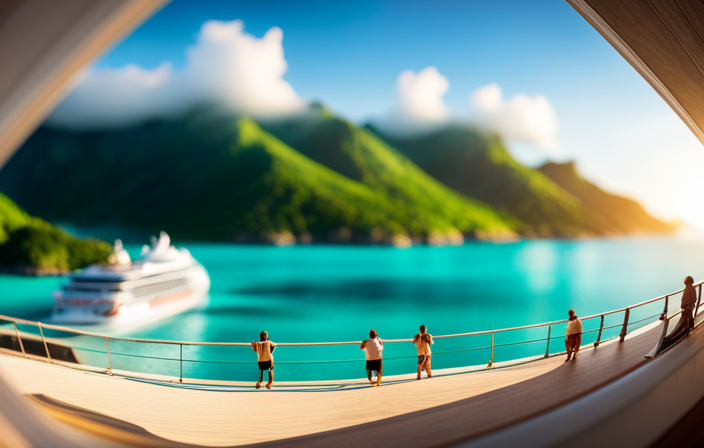
Howdy! While we make our way through the unpredictable challenges brought on by the global health crisis, the cruise industry is undoubtedly one of the hardest hit sectors. However, do not despair, fellow journey-seekers, as it appears that there is a glimmer of hope on the horizon!
In this article, we will delve into the exciting world of cruises in 2021 and explore how we can safely experience and support their future.
Like a sturdy anchor, the Centers for Disease Control and Prevention (CDC) has laid out requirements for test cruise volunteers, ensuring that we set sail with utmost caution. These requirements include being 18 years or older, fully vaccinated against COVID-19 or having no high-risk medical conditions, and agreeing to COVID-19 testing. These test cruises serve as a simulation, allowing cruise lines to fine-tune their operations and ensure the safety of both crew and passengers.
So, grab your life jackets and join me as we embark on a journey to discover the ins and outs of these test cruises. From embarkation to dining, entertainment to medical evacuation procedures, we will explore it all.
Let’s set sail and support the future of cruises in 2021!
Key Takeaways
- CDC requirements for test cruise volunteers include being 18 years or older, fully vaccinated against COVID-19 or having no high-risk medical conditions, and undergoing COVID-19 symptom evaluations before embarkation and disembarkation.
- The purpose of test cruises is to ensure safe operation during the global health crisis and simulate the passenger experience.
- Test cruises must be at least 2-7 days in duration with at least one overnight stay, and the CDC recommends a minimum voyage length of 3 days with 2 overnight stays.
- Simulated activities on test cruises include embarkation and disembarkation procedures, dining, entertainment, and medical evacuation procedures, isolation and quarantine measures, and protocols for recreational activities and shore excursions.
What is it?
I’ll explain what a test cruise is in 2021. A test cruise is a simulated voyage that cruise lines conduct to ensure safe operation despite the global health crisis. These cruises serve to test and evaluate the implementation of safety measures and protocols.
The purpose is to simulate the passenger experience and identify any areas that may need improvement. Test cruises typically last between 2-7 days, with at least one overnight stay. Safety is of utmost importance, and all volunteers must adhere to CDC requirements, such as being fully vaccinated against COVID-19 and undergoing pre and post-disembarkation COVID-19 testing.
While test cruises are not paid and cannot be part of employment conditions, volunteers have the opportunity to support the future of the cruise industry and contribute to the development of enhanced safety protocols.
Requirements for Volunteers
To volunteer for a test cruise in 2021, I must meet the CDC requirements, including being fully vaccinated against COVID-19 or having no high-risk medical conditions, and I must be willing to undergo COVID-19 testing before and after the cruise.
The evaluation process for volunteers will involve assessing their vaccination status and checking for any COVID-19 symptoms before embarkation and disembarkation.
The purpose of this evaluation is to ensure the safety of all participants and to simulate a real passenger experience. It is crucial for volunteers to comply with these requirements in order to support the future of cruises in 2021 and to help the industry operate safely amidst the global health crisis.
By following these guidelines, we can contribute to the development of effective protocols and measures that will allow cruise ships to resume operations in a responsible manner.
Test Cruise Details
The test cruises will have a duration of 2-7 days and will include at least one overnight stay. These cruises are designed to simulate the passenger experience and ensure safe operation despite the ongoing global health crisis. During the test cruises, various activities will be simulated, including embarkation and disembarkation procedures, dining, entertainment, and medical evacuation protocols.
Additionally, there will be simulated recreational activities such as casinos and spa services, as well as protocols for private-island and port of call shore excursions.
As for the sign-up process and selection for test cruises, currently, only Royal Caribbean has provided a sign-up form for volunteers. In the first week, they received 100,000 signatures. However, there haven’t been any announcements or updates regarding sign-up methods from Norwegian, Carnival, MSC, and Disney. The volunteer selection process for test cruises hasn’t been disclosed at this time.
Frequently Asked Questions
Can I bring my own food and beverages on a test cruise?
On a test cruise, passengers are not allowed to bring their own food and beverages. The cruise line provides all meals and drinks as part of the simulated passenger experience. Dietary restrictions can be accommodated upon request.
Will test cruise volunteers have access to all onboard amenities and services?
Test cruise volunteers are expected to have access to all onboard amenities and services. However, it is important to note that volunteers are not compensated for their participation in the test cruises.
Are there any restrictions on the number of passengers allowed on a test cruise?
Passenger capacity limits for test cruises are determined by the CDC. However, cruise lines that require vaccinations for passengers can bypass test cruises. Vaccination requirements are in place to ensure the safety of all participants.
How often will test cruises be conducted in 2021?
Test cruises will be conducted multiple times in 2021 as part of the cruise industry recovery and to ensure health and safety measures. The exact frequency of test cruises has not been specified.
Will test cruise volunteers be compensated in any way for their participation?
Test cruise volunteers will not be compensated for their participation. However, they will benefit from the opportunity to experience a simulated cruise, contribute to the safe operation of cruises, and help shape the future of the industry.
Claire, a creative soul with an unquenchable thirst for storytelling, is an integral part of the Voyager Info team. As a dedicated writer, she weaves captivating narratives that transport readers to enchanting cruise destinations and beyond.
Claire’s love affair with writing began at an early age when she discovered the magic of words and their ability to craft worlds and emotions. Her innate curiosity led her to explore various literary genres, but it was travel writing that truly captured her heart. Drawing inspiration from her own globetrotting adventures and encounters with diverse cultures, Claire embarked on a journey to become a travel writer par excellence.
Cruise News and Updates
How Cruise Ships Operate: Profits, Strategies, And Continuous Operation
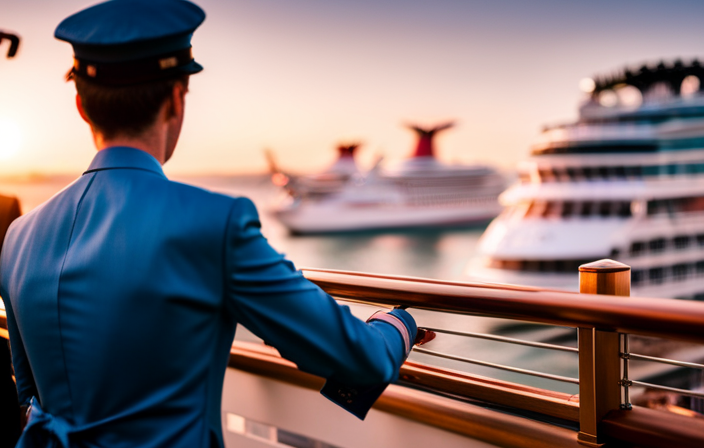
Hello! We are excited to invite you to explore the captivating world of cruise ships and learn about how they operate.
Picture this: cruise ships, those floating paradises on the sea, are not only about providing unforgettable vacations but also about generating impressive profits. In this article, we’ll explore the strategies and continuous operation that keep these magnificent vessels afloat financially.
Did you know that ticket prices for mainstream cruise lines average around $1,293? But that’s just the beginning. Additional onboard spending can add up to a whopping $429 per passenger. From casinos to spas, shopping to dining, and everything in between, cruise lines have cleverly designed their ships to maximize revenue from various sources.
But it doesn’t stop there. We’ll also uncover the secrets behind the ownership and categorization of cruise lines. From Carnival Corporation to Royal Caribbean Group and Norwegian Cruise Line Holdings, these three corporations dominate the industry with their multiple brands.
So, fasten your seatbelts (or life jackets) and get ready to embark on a journey through the intriguing world of cruise ship operations.
Let’s set sail!
Key Takeaways
- Cruise ship ticket prices include both the base fare and additional onboard spending, such as casinos, spas, shopping, dining, Wi-Fi, and drinks.
- Main sources of profit for cruise lines are casinos, spas, shopping, dining, Wi-Fi, and drinks.
- Placement of common areas like lounges, bars, and casinos strategically along passenger routes helps generate more revenue.
- Cruise lines employ various profit-making strategies, such as making most of the money upfront for premium cruise lines and catering to passengers who spend more time in ports for luxury cruise lines.
How They Make Money
I make money by offering various sources of entertainment and amenities on board, such as casinos, spas, shopping, dining, Wi-Fi, and drinks. These are the key sources of profit for cruise lines. Onboard revenue sources are crucial in generating income for the company.
Passengers spend money on these amenities and entertainment options, contributing to the overall profitability of the cruise line. Additionally, we generate revenue through passenger spending on private islands. By leasing private islands from foreign countries, we provide passengers with unique experiences, such as complimentary beach chairs and BBQ lunches. This not only enhances their vacation but also increases their spending on the island.
These onboard revenue sources and passenger spending on private islands play a significant role in ensuring the financial success of the cruise line.
Continuous Operation Process
Year-round, cruise liners tirelessly navigate the seas, seamlessly switching regions during repositioning cruises, and swiftly preparing for the next voyage on turnaround day. Crew management plays a crucial role in ensuring continuous operation. Cruise lines hire crew members from foreign countries, allowing them to save costs while maintaining a diverse and efficient workforce. These crew members work tirelessly to provide exceptional service to passengers, ensuring their comfort and satisfaction throughout the voyage.
Repositioning cruises are another aspect of continuous operation. These cruises occur when ships move from one region to another, often during seasonal changes. During repositioning cruises, cruise lines take the opportunity to offer unique itineraries and experiences to passengers. This allows them to generate additional income while optimizing the usage of their fleet.
Incorporating a 3 column and 5 row table:
| Continuous Operation Process | |
|---|---|
| Year-round operation | Without breaks |
| Repositioning cruises | Ships switch regions |
| Turnaround day | Quick disembarkation and preparation for the next cruise |
| Crew management | Hiring crew members from foreign countries |
| Additional income | Visiting multiple ports |
Ownership and Categorization
Carnival Corporation, Royal Caribbean Group, and Norwegian Cruise Line Holdings are the three corporations that own multiple cruise line brands. These corporations have a complex ownership structure, with each owning several cruise lines that cater to different market segments.
Carnival Corporation, for example, owns popular mainstream brands such as Carnival Cruise Line and Princess Cruises, while Royal Caribbean Group owns premium brands like Royal Caribbean International and Celebrity Cruises. Norwegian Cruise Line Holdings, on the other hand, owns Norwegian Cruise Line, which falls into the mainstream category.
Differentiation factors play a crucial role in the ownership structure. Each corporation strategically positions its cruise line brands to cater to different types of passengers. This allows them to capture a wider market share and maximize profits.
From mainstream to luxury, these corporations have created a diverse range of cruise lines that offer unique experiences and amenities. By offering different levels of service, accommodations, and onboard activities, they are able to attract and retain passengers with varying preferences and budgets.
The ownership and categorization of cruise line brands play a significant role in the overall profitability and success of these corporations.
Frequently Asked Questions
How do cruise ships handle medical emergencies and provide medical care to passengers on board?
Cruise ship medical facilities are equipped to handle medical emergencies. The crew receives emergency response training, and medical personnel are available on board. Passengers can receive medical care and treatments while at sea.
What safety measures are in place to prevent accidents or incidents on cruise ships?
Cruise ship safety measures include thorough training for crew members, regular safety drills, strict adherence to international safety regulations, advanced navigation systems, surveillance cameras, and emergency response protocols to prevent accidents and incidents onboard.
How do cruise ships handle waste management and environmental sustainability?
Ah, waste management and environmental sustainability, the unsung heroes of cruising. Cruise ships tackle these challenges through advanced waste treatment systems, recycling programs, and energy-efficient technologies, ensuring a greener voyage for all.
What is the process for hiring and training crew members on cruise ships?
The hiring process for crew members on cruise ships involves recruiting from foreign countries, conducting interviews and background checks, and providing training in various areas such as safety, customer service, and emergency procedures.
How do cruise ships handle security and ensure the safety of passengers and their belongings?
Cruise ship security is a top priority, ensuring passenger safety and protecting their belongings. Vigilant surveillance systems, trained security staff, and strict access control measures are implemented to prevent incidents and swiftly respond to emergencies.
Claire, a creative soul with an unquenchable thirst for storytelling, is an integral part of the Voyager Info team. As a dedicated writer, she weaves captivating narratives that transport readers to enchanting cruise destinations and beyond.
Claire’s love affair with writing began at an early age when she discovered the magic of words and their ability to craft worlds and emotions. Her innate curiosity led her to explore various literary genres, but it was travel writing that truly captured her heart. Drawing inspiration from her own globetrotting adventures and encounters with diverse cultures, Claire embarked on a journey to become a travel writer par excellence.
Cruise News and Updates
The Fascinating World Of Cruise Ships: Size, Power, And Environmental Impact
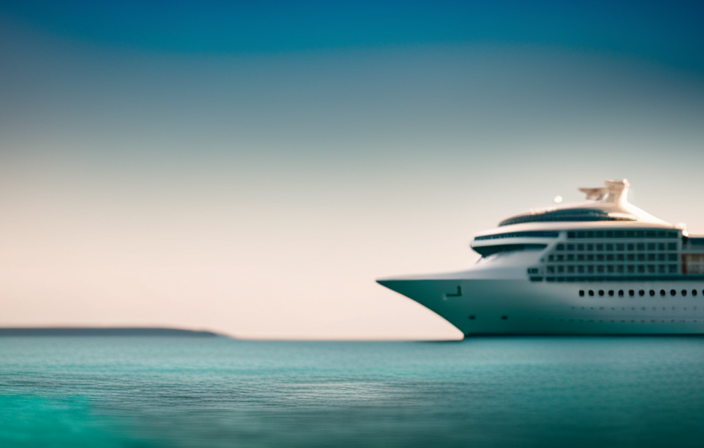
Oh, the world of cruise ships. It’s a mesmerizing realm, filled with magnificent vessels sailing the vast oceans, taking passengers to distant, enchanting locations.
The sheer size and power of these floating marvels never fail to astound me. From their towering lengths, ranging from 900 to 1,100 feet, to their impressive fuel tanks, holding a staggering 1 to 2 million gallons of fuel, cruise ships are a testament to human engineering. Some even harness the energy of liquefied natural gas, with engines so colossal they could fill a room. It’s truly awe-inspiring.
Yet, amidst this marvel, we must also consider the environmental impact. Many cruise lines still rely on diesel-powered engines, but the use of LNG reduces carbon emissions by a significant 30%.
As a passionate traveler and writer, I am eager to delve into the fascinating world of cruise ships, exploring their size, power, and environmental impact. Join me as we embark on this journey of discovery and exploration.
Key Takeaways
- Cruise ships are massive vessels that can range in length from 900 to 1,100 feet.
- Some cruise ships use liquefied natural gas (LNG) as fuel, reducing carbon emissions by 30%.
- The environmental impact of cruise ships, particularly diesel-powered engines, is a concern and contributes to air pollution and climate change.
- The adoption of sustainable cruise practices, including the use of LNG fuel, is crucial for a more sustainable future and to mitigate the environmental impact of cruise ships.
Cruise Ship Specifications
Cruise ship specifications are an important aspect to consider when understanding their size, power, and environmental impact. These massive vessels can range in length from 900 to 1,100 feet, accommodating thousands of passengers and crew members.
Fuel consumption is a significant consideration, with cruise ships typically carrying 1-2 million gallons of fuel in their tanks. Some ships are now incorporating LNG tanks, which reduce carbon emissions by 30%.
The shipbuilding process is a complex endeavor, with engines playing a crucial role in powering these floating cities. Cruise ships are equipped with 4-6 engines, each generating an impressive 18.5 megawatts of power. These engines, measuring up to 45 feet in length and 27 feet in height, propel the ship at an average speed of 18-22 knots.
Additionally, cruise ships are equipped with two anchors weighing 10-20 tons each, ensuring stability while at port.
Engine and Power Details
When it comes to engine and power details, it’s important to consider the environmental impact and the need for alternative fuel sources.
Cruise ship propulsion plays a crucial role in determining the ship’s fuel efficiency and carbon emissions. Most cruise ships are equipped with 4-6 engines, each generating 18.5 megawatts of power. These engines can measure up to 45 feet in length and 27 feet in height.
While many cruise lines still rely on diesel-powered engines, there is a growing shift towards using liquefied natural gas (LNG) as a more environmentally friendly fuel source. LNG-powered ships can reduce carbon emissions by up to 30%.
As the cruise industry continues to evolve, it’s crucial for shipbuilders and operators to prioritize fuel efficiency and explore sustainable propulsion options to minimize their environmental impact.
Environmental Impact
As an enthusiast of the cruise industry, I am deeply concerned about the ecological consequences of traditional diesel-powered engines commonly used on cruise ships. Cruise ship emissions have a significant impact on the environment, contributing to air pollution and climate change. However, there are sustainable cruise practices being implemented to address these concerns. One such practice is the use of LNG-powered fuel, which reduces carbon emissions by 30% compared to diesel. This is a positive step towards minimizing the environmental impact of cruise ships.
To visualize this information, here is a table highlighting the environmental impact of cruise ship emissions:
| Environmental Impact | Consequences |
|---|---|
| Air pollution | Increased respiratory |
| problems | |
| Climate change | Rising sea levels |
| and extreme weather |
By adopting sustainable cruise practices and transitioning to cleaner fuel sources like LNG, cruise ships can help mitigate their environmental footprint and contribute to a more sustainable future.
Frequently Asked Questions
What are some popular destinations for cruise ships?
Top rated cruise ship destinations include the Caribbean, Mediterranean, Alaska, and the Baltic Sea. These locations offer stunning scenery, cultural experiences, and a variety of activities. The cruise industry is adopting eco-friendly practices to reduce its environmental impact.
How many passengers can a typical cruise ship accommodate?
A typical cruise ship can accommodate thousands of passengers, resembling a floating city. With various cruise ship designs catering to different market segments, the cruise ship market continues to evolve to meet the needs of travelers worldwide.
What are some unique amenities or features found on modern cruise ships?
Luxury accommodations and innovative dining experiences are some unique amenities found on modern cruise ships. Passengers can enjoy spacious suites, private balconies, gourmet restaurants, and specialty dining options that cater to various tastes and dietary preferences.
How do cruise ship companies ensure the safety and security of their passengers?
Cruise ship companies ensure the safety and security of their passengers through various measures. They have well-equipped medical facilities onboard and conduct regular emergency drills to prepare passengers for any potential emergencies that may arise during their voyage.
What are some common activities or entertainment options available on cruise ships?
Cruise ships offer a wide range of activities and entertainment options. From gourmet dining experiences to luxurious onboard spa and wellness facilities, passengers can indulge in relaxation and enjoy a variety of amenities during their cruise vacation.
Claire, a creative soul with an unquenchable thirst for storytelling, is an integral part of the Voyager Info team. As a dedicated writer, she weaves captivating narratives that transport readers to enchanting cruise destinations and beyond.
Claire’s love affair with writing began at an early age when she discovered the magic of words and their ability to craft worlds and emotions. Her innate curiosity led her to explore various literary genres, but it was travel writing that truly captured her heart. Drawing inspiration from her own globetrotting adventures and encounters with diverse cultures, Claire embarked on a journey to become a travel writer par excellence.
-

 Cruise FAQs3 days ago
Cruise FAQs3 days agoHow To Turn On Cruise Control Tesla Model 3
-

 Cruise FAQs3 months ago
Cruise FAQs3 months agoWhat Is The Weather Like On A Transatlantic Cruise In April
-

 Cruise FAQs3 days ago
Cruise FAQs3 days agoHow To Set Cruise Control Tesla Model Y
-

 Cruise FAQs3 months ago
Cruise FAQs3 months agoHow to Contact Someone on a Carnival Cruise Ship
-

 Cruise Lines3 months ago
Cruise Lines3 months agoWhat Is The Average Age Of Passengers By Cruise Line
-
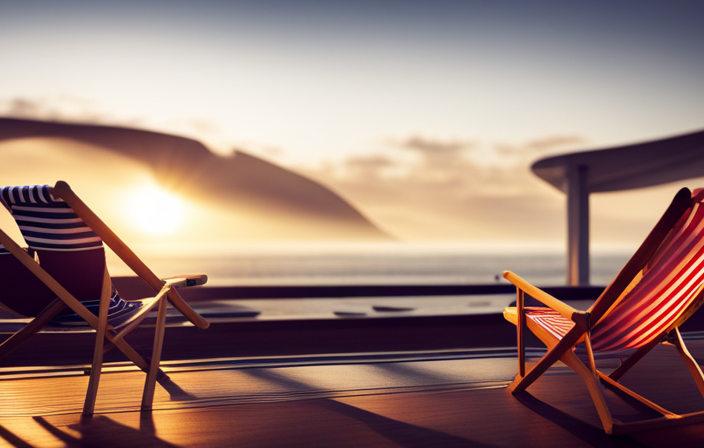
 Onboard Experience1 week ago
Onboard Experience1 week agoFinding Deals On Unsold Cruise Cabins: Tips And Strategies
-
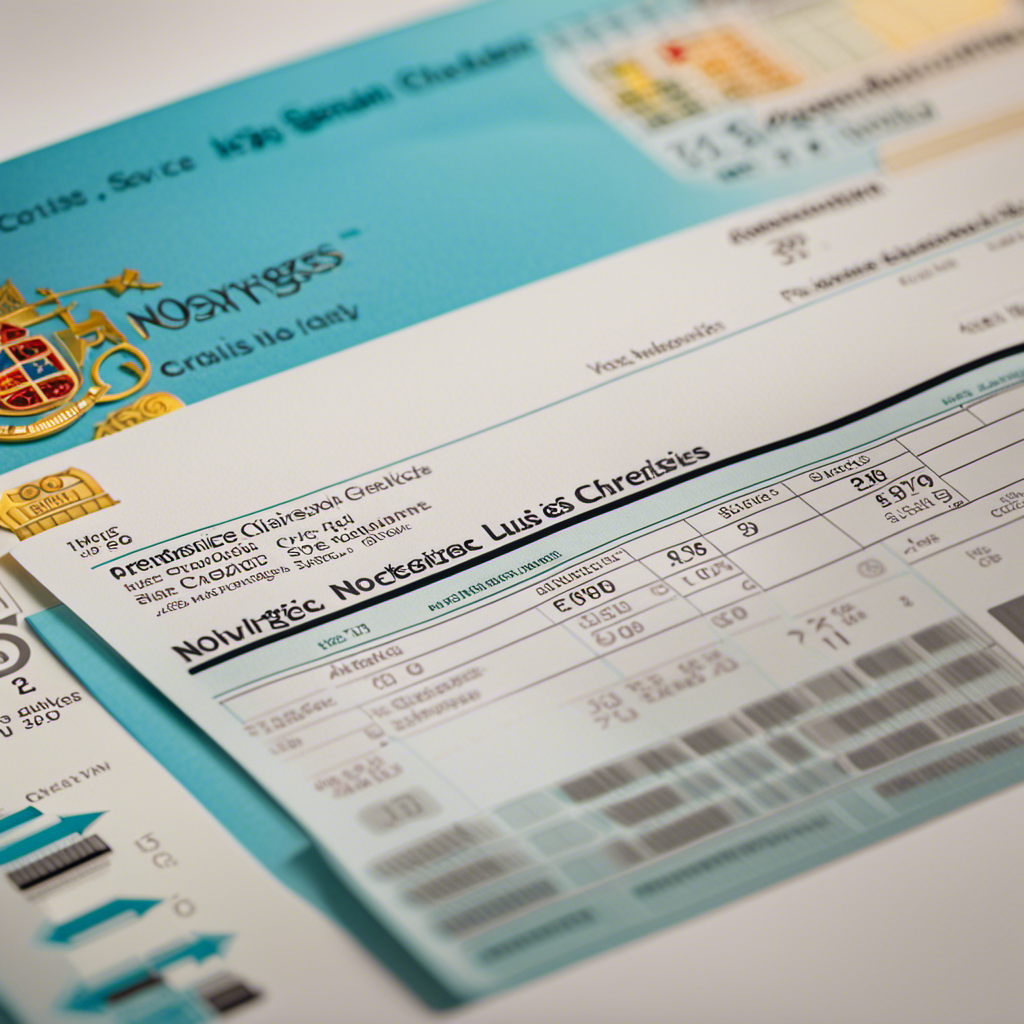
 Cruise Lines3 months ago
Cruise Lines3 months agoDecoding Norwegian Cruise Line’s Gratuities and Service Charges
-

 Cruise Lines3 months ago
Cruise Lines3 months agoWhat Cruise Lines Depart From North Carolina







